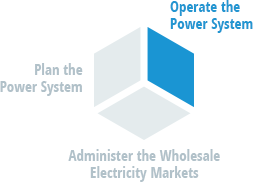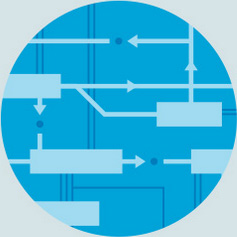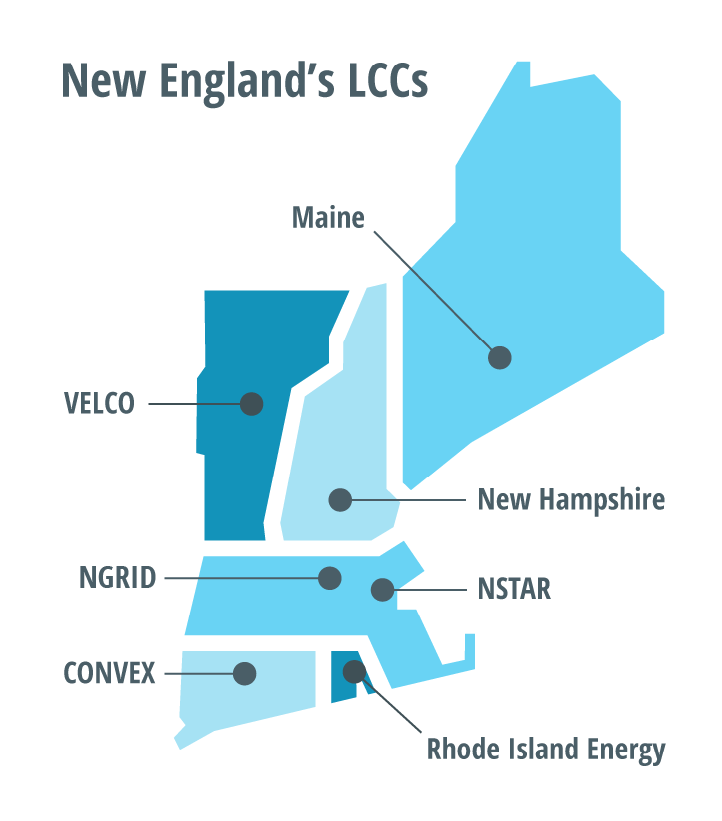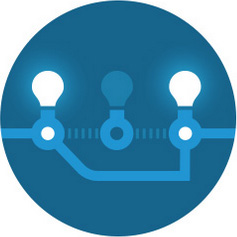Overseeing the day-to-day operation of New England’s power grid is one of three critical roles ISO New England performs in the region.
Before electricity is delivered to homes and businesses from the power lines on your street, it is generated and transmitted over a high-voltage electric power system that spans thousands of miles across the six states of New England.
The ISO is like the air traffic controller for the region’s power grid. From our state-of-the-art master control center (MCC) in Holyoke, Massachusetts, the ISO’s certified system operators monitor, dispatch, and direct the flow of electricity across the power grid 24 hours a day, 365 days a year.

The ISO’s system operators go through a rigorous and continuous training process and must be certified by the North American Electric Reliability Corporation. In the unlikely event that the master control center is rendered inoperable, fully redundant systems at the backup control center (BCC) enable system operators to continue managing the grid reliably.

To ensure a reliable supply of electricity, our operators must consider a large number of variables that can at any moment affect the production and flow of power across the grid. These include:
ISO staff work around the clock to create a variety of demand, or “load,” forecasts. These short-term forecasts help us decide how many megawatts (MW) of electricity we need for a given week, day, or hour, and help us to manage the grid reliably through cold temperatures in the winter, hot temperatures in the summer, and at other times of unusual demand. We continually track weather and monitor power plants for unexpected outages and transmission lines for overloads to update these forecasts. The ISO also creates 10-year—and even longer-term—forecasts for use in regional system planning.

To meet the hourly forecast of electricity consumption, ISO control room operators issue electronic or verbal instructions to each of the hundreds of resources—generators, transmission facilities, and other market participants in the region—to start up, shut down, raise or lower generation, modify interchange schedules, etc.

Seven sub-regional control centers called local control centers (LCCs), operated by transmission companies, assist ISO New England in running the power system. Like the ISO's control room, these facilities are staffed 24 hours a day by operators who monitor the real-time production and flow of electricity. The LCCs monitor the more local aspects of their portion of the electric power grid and take direction from the ISO control room regarding necessary local actions, such as switching a transmission line in or out of service. LCCs also serve as backup to perform certain critical ISO New England functions. The ISO also coordinates its activities with neighboring power system operators to protect the reliability of the interconnected systems.

At any moment, a generator, transmission line, circuit breaker, or other element on the power system could fail or go out of service. For example, a generator could trip due to a cooling system problem, or a transmission line could trip after a lightning strike. Power system disturbances like these are known as contingencies. To ensure minute-to-minute reliability of the power system, ISO system operators adhere to mandatory requirements for maintaining an adequate reserve of electricity supply that can be called on to produce electricity should a contingency occur.
Resources designated to provide operating reserves are identified in advance of the operating day. Reserves can include New England power plants on standby or electricity imported from outside the region. ISO operators closely monitor these resources to ensure that they will be able to generate electricity within the prescribed time frames necessary to keep a constant balance between the supply of and demand for electricity on the grid.
The ISO performs a contingency analysis using special software every few minutes to simulate the loss of each system component (there are thousands!) and determine which transmission line or generator losses would have the largest adverse impacts on the system in real time and in future hours. Once these worst-case scenarios are calculated, a plan is prepared to change the flow of power in the system to prevent a power interruption or to prevent an isolated event from triggering a cascading, systemwide loss of power due to the highly interconnected nature of the grid.
ISO New England maintains two categories of reserves: resources that can provide energy within 10 minutes and resources that can provide energy within 30 minutes. Typically, the ISO maintains an operating reserve of between 1,560 MW and 2,250 MW in 10-minute reserve, plus 625 MW or so in 30-minute reserve.
A variety of circumstances can jeopardize the amount of required operating reserve available on the system, such as having an unusual number of power plants out of service due to mechanical problems or experiencing unexpected high demand due to extreme hot or cold weather. To respond to such conditions, ISO New England has special operating procedures to keep the power system operating reliably when reserves run low. Steps can include:
The current status of the grid—including whether any special procedures have been implemented—can always be seen on the Current Power System Status page or in ISO Express.

Another responsibility for the ISO related to grid operation is to coordinate thousands of transmission-line and power-plant repair or maintenance outages annually to ensure they do not compromise power system reliability.
In addition to measuring the impact of proposed outages on reliability, we also gauge the probable economic effects of these outages and disseminate information on planned outages to market participants. Inadequate transmission capacity in an area of the grid may prevent the least-cost electricity from being transmitted to meet demand in that area. This is called a congestion cost and is a component of the price of wholesale electricity. The ISO’s work on scheduling major outages has saved New England consumers hundreds of millions of dollars in congestion costs since 2005.
The ISO continues to work with market participants to improve the timely submittal and coordination of planned outages and has made significant progress over the years.
Learn about the ISO’s other two critical roles in the New England electricity industry: